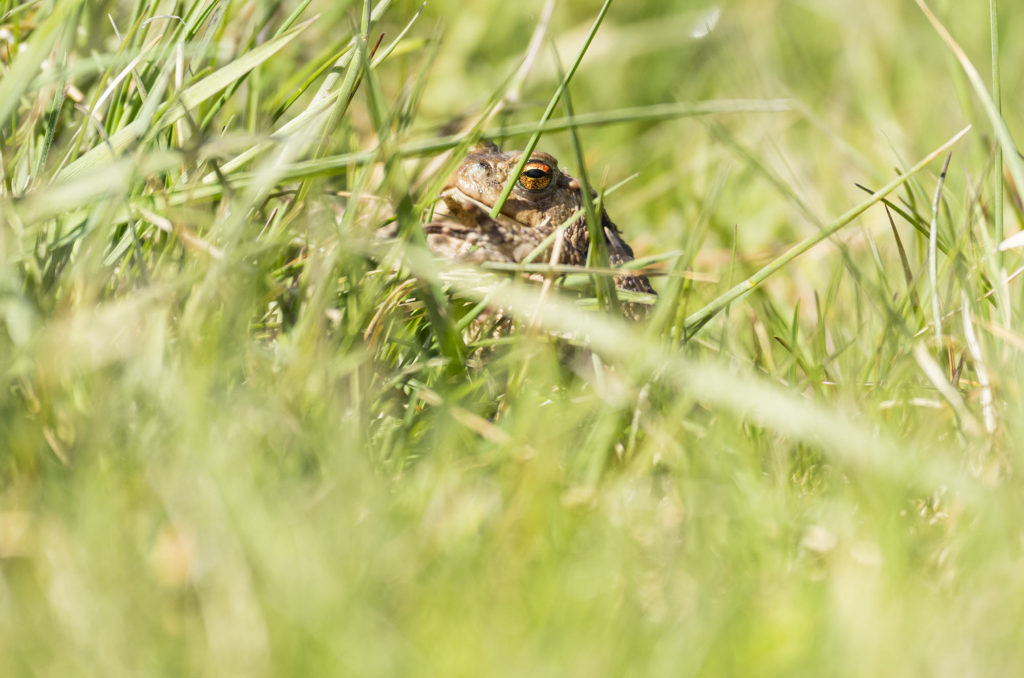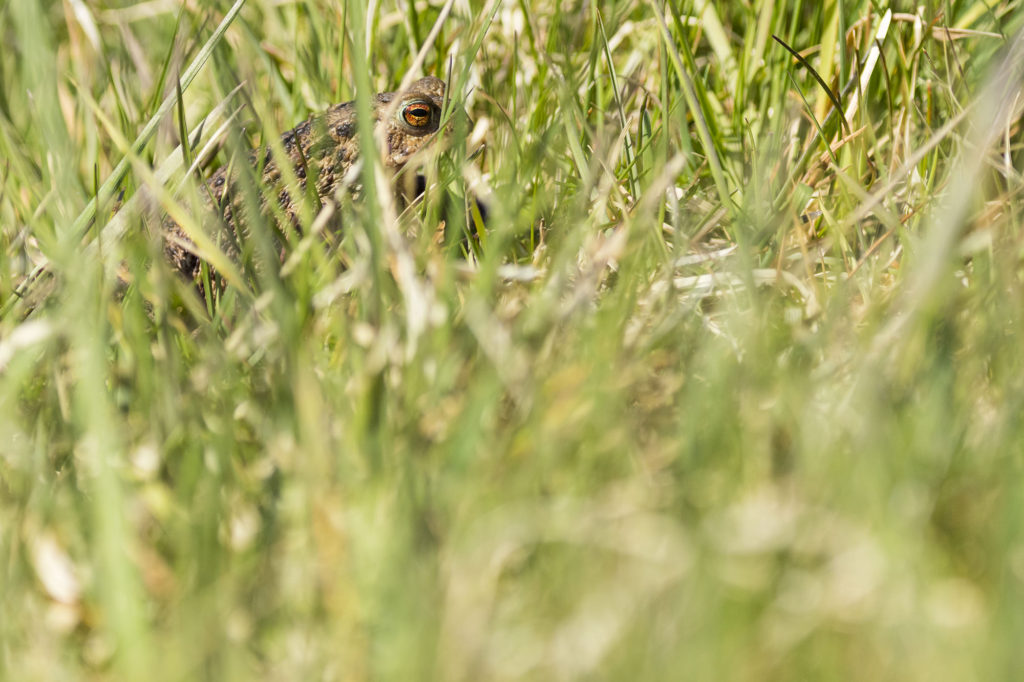Did you know that if more than 1,000 toads are known to hop across a road in a particular spot, it is known as a “toad crossing”? These determined amphibians often return to the same body of water each year to breed and don’t let anything get in their way. These perilous journeys include crossing any roads that stand between them and their ancestral breeding ponds. Sadly, around 20 tonnes of these creatures are killed by traffic each year.
The Toads on Roads project
So, many migrating toads need the equivalent of lollipop people to help them cross the road. This is where Froglife’s Toads on Roads project comes in. The charity registers sites as “migratory crossings” and helps coordinate local Toad Patrols that go out in all weathers to ensure the toads avoid getting squashed. You can find your nearest toad crossing, register a site and get more information on this long-running project on the Froglife website.

One determined amphibian
I captured these images of a common toad back in April. Happily, we were a long walk away from the nearest road. We had been sitting by a reservoir in the sun, listening to the chaffinches and watching a raven fly over. When we finally got up to continue our walk, we saw this toad making its way through the grass a short distance away. I sprawled out on the ground to get as low as possible and captured a few images. I had my 80-400mm lens, which enabled me to maintain a respectful distance from my subject, and I was able to shoot away without disturbing the progress of the toad towards the water. Amphibians aren’t my usual subject of choice, but I was particularly taken with this determined toad.

Although we spotted this common toad during the day, they are mainly nocturnal and usually spend the daytime in shallow burrows to conserve their energy.
As well as the dangers of crossing the road, common toad numbers are impacted by the loss of their breeding ponds and the drainage of other wet areas.

